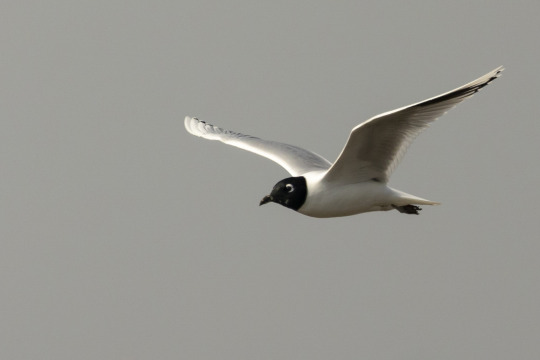#saunders gull
Photo

Saunders’s Gull
121 notes
·
View notes
Text
Round 1, Side A: Match 4

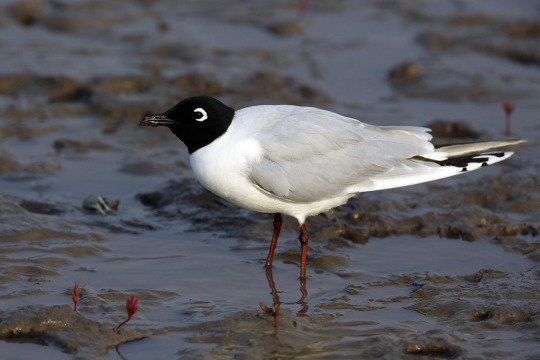
[Image ID: Two pictures of gulls. The left is a Belcher's gull standing on a rock by the water. The right is a Saunders's gull standing in mud and water. /End ID]
The Belcher's gull (Larus belcheri) is found along the Pacific coast of South America. They typically measure 49 cm (19 in) in length. They have white underparts and head, greyish-black back and wings, yellow legs and feet, and yellow bill with a red and black tip. Their white tail has a distinctive broad black band. Outside of the breeding season, their head is dark with white eye crescents. They feed on fish, crabs, molluscs, and carrion, and seasonally on the eggs and nestlins of seabirds. They have been observed pestering Guanay cormorants until they regurgitate their prey, which the gulls then consume.
The Saunders's gull (Chroicocephalus saundersi) is found in eastern Asia. They are the second smallest gull after the little gull, typically measuring 29-32 cm (11-13 in) in length and 87-91 cm (33-36 in) in wingspan. They have a black hood, white eye crescents, white body, pale grey wings, narrow black tail band, reddish-orange legs, and short black bill. The underside of their wings have black patches at the tips with white leading edges. They feed on mudskippers, crabs, fish, and worms, and steal food from other species of birds. Due to their declining population and dependence on saltmarshes dominated by seepweed, which are being drained for aquaculture, they are listed as vulnerable by the IUCN.
Belcher's gull image by Alastair Rae
Saunders's gull image by lonelyshrimp
7 notes
·
View notes
Text
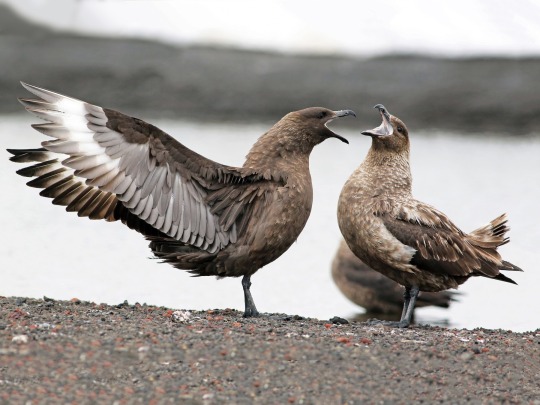
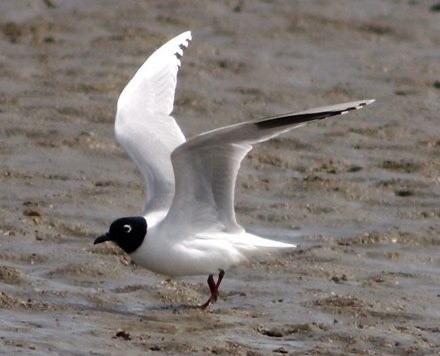
Harry and kim. To me
(Pictured: brown skua and saunders gull)
22 notes
·
View notes
Photo

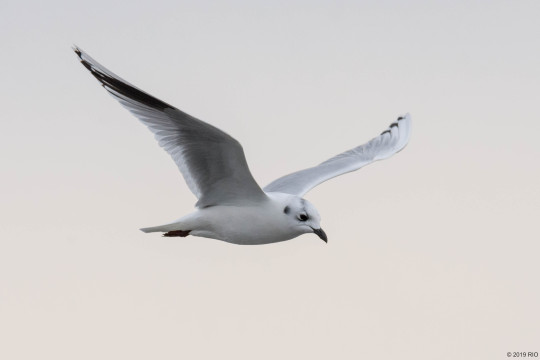
Saunders’s gull
Adult winter
2019.12.06
Sanbanze Funabashi, Chiba pref. JAPAN
0 notes
Text
Days 22 to 23 - back to Port
Day 22, Friday, 6 January 2023
This part of our trip is coming to an end. We have our last landing today and a day at sea tomorrow before disembarking in Ushuaia early on Sunday.
We were both feeling pretty ordinary with our coughs and colds and Heather stayed in bed. I went down to the dining room and delivered her a hot brekky that she couldn’t face so I ate most of that and went back to choose something more to her capacity on the day.
We had moved to Saunders Island overnight: a privately-owned island with lots of Penguin, Shag and Albatross rookeries. I went ashore in quite reasonable conditions and there certainly were a lot of birds, including six more species to add to my list. There were numerous/many penguin rookeries – Gentoos, Kings, Southern Rockhoppers and Magellanics – a hillside of shags (both the local species and a bunch of penguins interspersed) and at least 3 large areas of Black-browed Albatrosses, mostly guarding lovely balls of grey fluff that had just been hatched. Of course, at least three species of predators were constantly on patrol – Skuas, Kelp Gulls and Dolphin Gulls. And there were a few other species around – Turkey Vultures, Long-tailed Meadowlarks, Austral Thrushes and Kelp Geese. The Black-browed Albatrosses are one of my favourite birds (or did I already say that?), huge, beautiful and quite magnificent and it was an absolute delight to be a mere 3 or 4 metres from them and to see them nurturing their chicks without the least concern for the 50-odd humans ogling them.
It was a very long, steep climb to see all these wonderful birds (well over two kilometres) and with my cold and congestion, it nearly killed me, but I rested several times along the route and it was worth every step. When I eventually trudged back to the beach, the wind had sprung up, but there were no zodiacs available for about half an hour so a few of us spent the time chatting with the owner and his wife, who were on the beach to welcome us -and probably to ensure nobody misbehaved.
The trip back to the ship was again wet and windy so it was lovely to step into a hot shower and leave my wet clothes to dry. That was supposed to be our last excursion for the trip with just a couple of on-board Citizen Science things scheduled for the afternoon. The Expedition Leader, however, told us that seeing it was such an unexpectedly good day, they would squeeze one more adventure in during the afternoon before high-tailing it at speed to get to Ushuaia on schedule. It was a 4-kilometre walk across Carcass Island. Unfortunately, I was too buggered after the morning’s exertion to contemplate yet another strenuous excursion so we both stayed on board – and I have written quite a bit of this blog today. In retrospect, I think I would have liked Carcass Island and I would have seen a few new birds too. David did the walk and asked me to help identify some of the birds in his photos – and I was able to identify all except one that we are not quite 100% about. That is when I realised I had missed seeing a few because I didn’t do that walk. (He had asked Ian to help but he referred him to me, saying that I was a better birder than him! Really???)
I attempted to post some early experiences on numerous occasions along the way, but internet access has always been so slow that I have been timed out before anything is sent. Hopefully, in Ushuaia……….
After dinner, there was an auction of a number of items provided by the South Georgia Museum as a fundraiser, allegedly to protect some areas of land in the colony. We saw the items in question as well as the acceptable opening bids and decided that there was nothing there that we wanted quite that desperately. It would almost certainly have been the same had we not seen the opening bids, but one example was a drinking glass with a penguin logo painted on the side – opening bid: 80 pounds sterling! What if it got broken? Which raises another issue. I was sure our Expedition leader said that six South Georgia pounds were exchanged for one pound sterling. But after spending a few of them, we found that the ratio was 1:1 not 1:6. Gulp?
Day 23, Saturday, 7 January 2023
It was called a sea day today, but we were in sight of land on both port and starboard for at least half the day, chugging straight for Ushuaia early tomorrow.
They had an interesting segment in the morning where they answered a whole raft of questions people had asked throughout the voyage but where the guides had not known a full and accurate description were answered. The expedition team had done their homework and gave us excellent answers to numerous questions. This was followed by a wrap-up of all the activities on board, but especially the Citizen Science projects. We contributed a surprising amount of data to at least 5 different projects, and they suggested a couple more for people to do when get home. Some can be continued at home, but new ones can be started too and there is one that I will almost certainly have a dabble in. It is called Penguin Watch and is similar to a project I did in Australia a few years ago. You have access to thousands of time-lapse or movement-activated photos from hundreds of penguin rookeries (my Aussie one monitored Frogs, Perenties, Mallee-fowl and 2 or 3 other species) and you record various items that you see. It has a good QA process and saves thousands of hours of the researcher’s work because the project presents aggregated data that is ready for them to analyse and use.
Just before lunch, there was a short briefing about the disembarkation process in the morning but it was all old hat to us and very simple.
During the afternoon, Howard gave a presentation about the making of the movie Happy Feet. He was one of the key players in getting it started and in researching all sorts of penguin things. He has certainly been involved with a lot of well-known people on many major high-profile projects. They then showed the film, but I left part-way through because I couldn’t follow much of the dialogue in all the funny penguin voices. As I was leaving, I looked out the window and the ship was surrounded by literally hundreds of Black-browed Albatrosses. They were flying around the ship, wheeling and diving, just cruising around having fun. I reckon there were at least a hundred in the air but three or four times as many just sitting on the water soaking up the sun. They are one of my very favourite birds (I already said that!) and I watched them for quite a while.
It is a long time since I gave an update on the birds I have identified so far on this trip. While still in Australia, I saw 4 species, none in NZ or Chile, but 22 in Argentina (BA and Ushuaia), 14 on the Antarctic Peninsula and 21 on South Georgia (part of the UK). I have also identified quite a few while in open water at sea – 10 between Argentina and the Peninsula, 5 at Elephant Island plus two more nearby and 3 more en route to South Georgia. Since leaving South Georgia, I have identified another 9 – but some of the ‘at sea’ species were seen in more than one place – so count it as 22 different species all up seen at sea. But some of them were also seen at more than one place on land as well so the total species count for the whole trip currently stands at 60 unique species or subspecies. Without any proper analysis, I guess about twenty of them are ‘lifers’ for me.
After dinner, there was another wrap up of all the things that we had experienced on the expedition and they made a presentation to the guy who guessed closest to the first iceberg sighting and also to the winner of the ‘front cover’ competition. Everyone had been invited to post one photo as the possible cover design for our expedition book and we could all vote for our favourite. I voted for number 22 and as it turned out it won. Mine was number 11 so I reckon the winner must have been twice as good as mine. They then played a slideshow of most of the photos submitted by the passengers – up to ten each and we both submitted ten. I think they used eight of each of ours and the slideshow was really quite brilliant. I have a copy of it to see again and again whenever I want.
0 notes
Photo

It’s Primed to be a fang-tastic Halloween weekend next weekend playing Friday Night at the Sea Gull Lounge in Port au Choix then it’s off to the Port Saunders Town Center for Saturday night. It sure to be a spooktacular weekend with plenty of costumes and lots of boos https://www.instagram.com/p/Cj_2n_UMTVn/?igshid=NGJjMDIxMWI=
0 notes
Photo
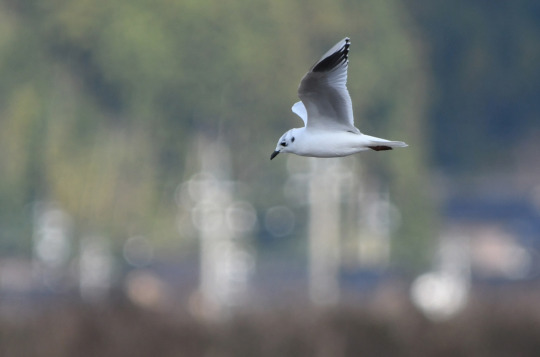


38 notes
·
View notes
Photo

ズグロカモメ 成鳥冬羽
Chroicocephalus saundersi Adult winter
2019.12.07
三番瀬
22 notes
·
View notes
Photo
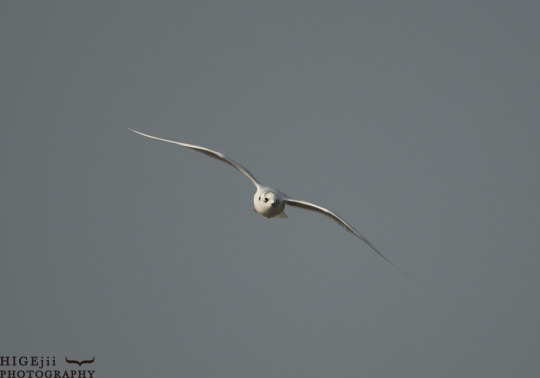



ズグロカモメ 2019.12
6 notes
·
View notes
Photo


水たまりのズグロカモメ
そう言えばズグロカモメ撮ってたっけ。ガングロ・・・可愛い・・・
8 notes
·
View notes
Text
Starkid The Little Mermaid


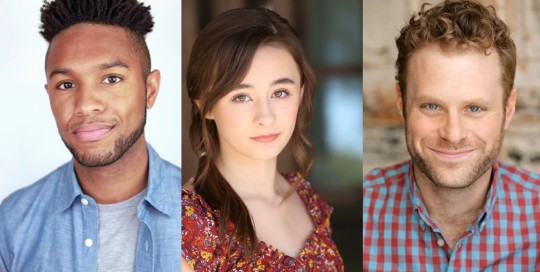






Under the Sea! It’s time for the Starkid dreamcast of The Little Mermaid (the twisted version)! I’m basing this on the Original Broadway production (I have a book that details a lot about the making the musical) so keep that in mind when reading this.
1. Kim Whalen as Ariel
2. Jaime Lyn Beatty as Ursula
3. Curt Mega as Prince Eric
4. James Tolbert as Sebastian
5. Kendall Nicole as Flounder
6. Dylan Saunders as King Triton
7. AJ Holmes as Scuttle
8. Jon Matteson as Flotsam
9. Robert Manion as Jetsam
10. Joe Walker as Grimsley
11. Joey Richter as Chef Louis/Ensemble
12. Jamie Burns as Carlotta/Ensemble/Ursula (u/s)
13. Corey Dorris as Ensemble/Sebastian (u/s)/King Triton (u/s)
14. Lauren Lopez as Ensemble/Ursula (u/s)
15. Meredith Stepien as Ensemble
16. Brian Holden as Gull/Ensemble/Scuttle (u/s)
17. Mariah Rose Faith as Daughter of Triton/Ensemble
18. Britney Coleman as Daughter of Triton/Ensemble
19. Jeff Blim as Ensemble
20. Brian Rosenthal as Gull/Ensemble/Prince Eric (u/s)/Jetsam (u/s)
21. Rachael Soglin as Daughter of Triton/Ensemble
22. Tiffany Williams as Daughter of Triton/Ensemble
23. Tyler Brunsman as Gull/Ensemble/Prince Eric (u/s)/Flotsam (u/s)/Grimsley (u/s)
24. Jim Povolo as Pilot/Ensemble/King Triton (u/s)
25. Brant Cox as Gull/Ensemble/Flotsam (u/s)/Jetsam (u/s)
26. Nick Lang as Gull/Ensemble/Flounder (u/s)/Scuttle (u/s)
27. Ali Gordon as Daughter of Triton/Ensemble/Ariel (u/s)
28. Angela Giarratana as Ensemble/Flounder (u/s)
29. Alle Faye-Monka as Daughter of Triton/Ensemble
30. Nico Ager as Gull/Ensemble
31. Joe Moses as Ensemble
32. Clark Baxtresser as Swing
33. Lauren Walker as Swing/Sebastian (u/s)
34. Nick Gage as Swing/Grimsley (u/s)/Chef Louis (u/s)
35. Alex Paul as Swing/Ariel (u/s)/Carlotta (u/s)
Make sure to leave any show suggestions or any questions on my casting choices so I can explain them.
#starkid#dreamcast#the little mermaid#kim whalen#jaime lyn beatty#curt mega#james tolbert#kendall nicole#dylan saunders#aj holmes#jon matteson#robert manion#joe walker#joey richter#jamie burns#corey dorris#lauren lopez#meredith stepien#brian holden#mariah rose faith#britney coleman#jeff blim#brian rosenthal#rachael soglin#tiffany williams#tyler brunsman#jim povolo#brant cox#nick lang#ali gordon
5 notes
·
View notes
Text
Round 3: Match 39


[Image ID: Two pictures of gulls. The left is a Saunders's gull taking flight. The right is a great black-backed gull standing on sand. /End ID]
The Saunders's gull (Chroicocephalus saundersi) is found in eastern Asia. They are the second smallest gull after the little gull, typically measuring 29-32 cm (11-13 in) in length and 87-91 cm (33-36 in) in wingspan. They have a black hood, white eye crescents, white body, pale grey wings, narrow black tail band, reddish-orange legs, and short black bill. The underside of their wings have black patches at the tips with white leading edges. They feed on mudskippers, crabs, fish, and worms, and steal food from other species of birds. Due to their declining population and dependence on saltmarshes dominated by seepweed, which are being drained for aquaculture, they are listed as vulnerable by the IUCN.
The great black-headed gull (Ichthyaetus ichthyaetus) breeds in southern Russia and Mongolia and migrates to winter in the eastern Mediterranean, Arabia, and India. They are the third-largest gull in the world, measuring 55-72 cm (22-28 in) in length and 142-170 (56-67 in) in wingspan. They have a black head, white eye crescents and underparts, grey back and wings with black tips and white "mirrors," and yellow legs and bill with red and black tip. They eat fish, crustaceans, insects, and even small mammals.
Saunders's gull image by Hyun-tae Kim
great black-backed gull image by Dick Daniels
5 notes
·
View notes
Photo

http://goo.gl/plM6ud weiss auf weiss by remarti
#seabird#sea bird#royal tern#macaroni penguin#water bird#petrel#antarctic sound#kelp gull#saunders is
0 notes
Photo

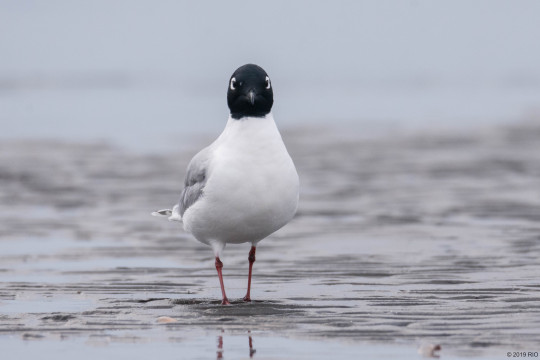

Saunders’s gull
Adult summer
2019.03.16
Sanbanze Funabashi, Chiba pref. JAPAN
0 notes
Photo

March 15, 2017 - Saunders's Gull or Chinese Black-headed Gull (Saundersilarus saundersi)
These gulls are found along the coasts of the Yellow Sea and the East China Sea. Their diet is not fully known but they are thought to eat crabs, mudskippers, other fish, and worms, diving at their prey, then landing and pecking at it on the ground. They are poor swimmers and often avoid water, flying over mudflats to hunt. Breeding in eastern China and on the coast of Korea, monogamous pairs build simple nests and care for two to three eggs. They are listed as Vulnerable by the IUCN due to population decline likely caused by habitat loss and disturbance at their nest sites.
#saunders's gull#gull#chinese black-headed gull#saundersilarus saundersi#bird#birds#illustration#art#water#birblr art
51 notes
·
View notes

